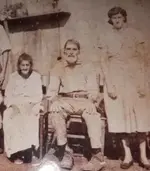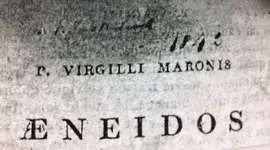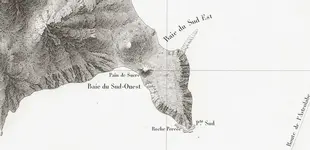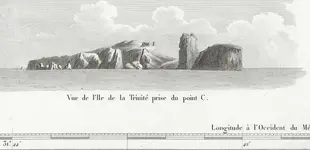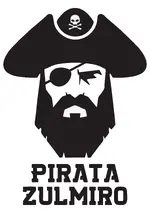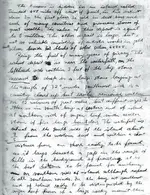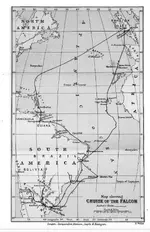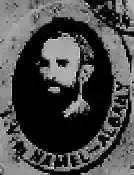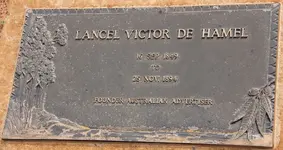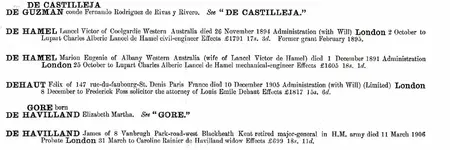KANACKI
Bronze Member
- Joined
- Mar 1, 2015
- Messages
- 1,445
- Reaction score
- 5,940
- Golden Thread
- 0
- Primary Interest:
- All Treasure Hunting
Hello Marco Juliano
The records of crew members and details of their voyages progressively changed resulting into numerous archive code numbers below.
The Merchant Shipping Act of 1835 required masters of all ships to file Agreements and Crew Lists with the Registrar General of Shipping and Seamen. The Government saw the need for registering all seamen who could be called upon to man Naval ships in times of war - the RGSS extracted names of all men from the Crew Lists and entered them into a series of Registers.
These registers are filed at the Public Record Office as follows:
BT120 - Register of Seamen series l, 1835-1836
This is a small series comprising 5 volumes, listing the men alphabetically by surname.
BT112 - Register of Seamen series ll 1835-1844
There are 83 volumes in the series, divided into two parts. Searches must be made in both sections, which can be in two volumes or two sections of the same volume. It should incorporate the names from BT120 but you must not rely on this being so. This register requires great care as the layout of the two sections is not straightforward and it is easy to overlook the
section required.
Both sections are roughly alphabetical, the first indexed by separate alphabetical indexes: BT119 Alphabetical Index to Seamen. This gives the reference number which can be used to trace the correct entry in BT112.
The second section is internally indexed. It is NOT indexed from BT119. This means that both sections must be searched for each seaman. It is important not to rely on the accuracy of the indexes in BT119 nor the internal indexes in the second section. If your seaman's name does not appear in the indexes you must always be prepared to search the actual registers. You may expect to find the seaman's name, number, age, place of birth, and reference to the ship or voyage.
BT114 - Alphabetical Register of Seamen's Tickets 1845-1854
From 1844, any seaman leaving the UK was required to have a register ticket, details being entered in this series of registers. This register gives the name, place of birth and Register Ticket number.
BT113 - Register of Seamen's Tickets
The key to this numerical register is the Ticket number obtained from the alphabetical register in BT114. There may be a brief biographical details of the seaman and a note of his voyages. It must be remembered that many entries are blank, especially towards the end of the series. The reported voyages are again in a simple code and provide a numerical key to the crew
lists and agreements.
BT116 - Register of Seamen Series lll 1853-1857
The ticketing system was abolished in 1853 and a new series was begun, much easier to search, listing seamen alphabetically with age, existing ticket number, place of birth and voyage details.
The problems with recording seamen throughout the whole period of 1835-1857 were eventually viewed as insurmountable and the whole system was discontinued. From that date up to 1913, the only way of tracing the career of a merchant seamen is by reference to the Agreements and Crew Lists.
So as you can see the only way tracing crew members of this suspect voyage of the "John to Santos" in 1880 with a cargo load of coal is looking through by reference to the Agreements and Crew Lists.
As we already know the only records Kew and national archives have of the john are the following below.
jOHN 68914 Grimsby, 22/1895 Shipping registers, NELA, Shipping register, 1893-1898
Built: 1875, Register closed: 1919 TNA catalogue, BT 110/794/11
[No port shown], Log books, 1904-1916 TNA catalogue, BT 165
Sunderland, 1/1875, Sail, 355 tons Appropriation Books, RSS
Sunderland, Sail, Brigantine MNL, 1880
Sunderland, Sail, Brigantine MNL, 1890
Grimsby, Sail, Brigantine MNL, 1900
Grimsby, Sail, Brigantine MNL, 1910
Grimsby, Sail, Brigantine MNL, 1915 .
No records of any surviving crew agreements or records.
So the only chance to discover if the John acually went to Santos is check if John Pyper was the captain in 1880 and search the records of voyages he made in the following below....
If you get the chance with reporters from New Castle to research a little more is the guildhall library...
Micro reproduction of original manuscripts in the Guildhall Library, London (Mss. 18,567-71). Compiled from the record of Certificates of Competency issued to masters. This was kept by the Registrar General of Shipping and Seamen from 1851 in accordance with the Mercantile Marine Act, 1850.
Lists the name of each master or mate; the place and year of birth; the date, number and place of issue of the master's certificate (from 1851); the name and number of each ship; the dates of engagement and discharge as master; the destination of each voyage; casualties; and special awards. Records cover the entire British Empire.
Kanacki
The records of crew members and details of their voyages progressively changed resulting into numerous archive code numbers below.
The Merchant Shipping Act of 1835 required masters of all ships to file Agreements and Crew Lists with the Registrar General of Shipping and Seamen. The Government saw the need for registering all seamen who could be called upon to man Naval ships in times of war - the RGSS extracted names of all men from the Crew Lists and entered them into a series of Registers.
These registers are filed at the Public Record Office as follows:
BT120 - Register of Seamen series l, 1835-1836
This is a small series comprising 5 volumes, listing the men alphabetically by surname.
BT112 - Register of Seamen series ll 1835-1844
There are 83 volumes in the series, divided into two parts. Searches must be made in both sections, which can be in two volumes or two sections of the same volume. It should incorporate the names from BT120 but you must not rely on this being so. This register requires great care as the layout of the two sections is not straightforward and it is easy to overlook the
section required.
Both sections are roughly alphabetical, the first indexed by separate alphabetical indexes: BT119 Alphabetical Index to Seamen. This gives the reference number which can be used to trace the correct entry in BT112.
The second section is internally indexed. It is NOT indexed from BT119. This means that both sections must be searched for each seaman. It is important not to rely on the accuracy of the indexes in BT119 nor the internal indexes in the second section. If your seaman's name does not appear in the indexes you must always be prepared to search the actual registers. You may expect to find the seaman's name, number, age, place of birth, and reference to the ship or voyage.
BT114 - Alphabetical Register of Seamen's Tickets 1845-1854
From 1844, any seaman leaving the UK was required to have a register ticket, details being entered in this series of registers. This register gives the name, place of birth and Register Ticket number.
BT113 - Register of Seamen's Tickets
The key to this numerical register is the Ticket number obtained from the alphabetical register in BT114. There may be a brief biographical details of the seaman and a note of his voyages. It must be remembered that many entries are blank, especially towards the end of the series. The reported voyages are again in a simple code and provide a numerical key to the crew
lists and agreements.
BT116 - Register of Seamen Series lll 1853-1857
The ticketing system was abolished in 1853 and a new series was begun, much easier to search, listing seamen alphabetically with age, existing ticket number, place of birth and voyage details.
The problems with recording seamen throughout the whole period of 1835-1857 were eventually viewed as insurmountable and the whole system was discontinued. From that date up to 1913, the only way of tracing the career of a merchant seamen is by reference to the Agreements and Crew Lists.
So as you can see the only way tracing crew members of this suspect voyage of the "John to Santos" in 1880 with a cargo load of coal is looking through by reference to the Agreements and Crew Lists.
As we already know the only records Kew and national archives have of the john are the following below.
jOHN 68914 Grimsby, 22/1895 Shipping registers, NELA, Shipping register, 1893-1898
Built: 1875, Register closed: 1919 TNA catalogue, BT 110/794/11
[No port shown], Log books, 1904-1916 TNA catalogue, BT 165
Sunderland, 1/1875, Sail, 355 tons Appropriation Books, RSS
Sunderland, Sail, Brigantine MNL, 1880
Sunderland, Sail, Brigantine MNL, 1890
Grimsby, Sail, Brigantine MNL, 1900
Grimsby, Sail, Brigantine MNL, 1910
Grimsby, Sail, Brigantine MNL, 1915 .
No records of any surviving crew agreements or records.
So the only chance to discover if the John acually went to Santos is check if John Pyper was the captain in 1880 and search the records of voyages he made in the following below....
If you get the chance with reporters from New Castle to research a little more is the guildhall library...
Micro reproduction of original manuscripts in the Guildhall Library, London (Mss. 18,567-71). Compiled from the record of Certificates of Competency issued to masters. This was kept by the Registrar General of Shipping and Seamen from 1851 in accordance with the Mercantile Marine Act, 1850.
Lists the name of each master or mate; the place and year of birth; the date, number and place of issue of the master's certificate (from 1851); the name and number of each ship; the dates of engagement and discharge as master; the destination of each voyage; casualties; and special awards. Records cover the entire British Empire.
Kanacki




